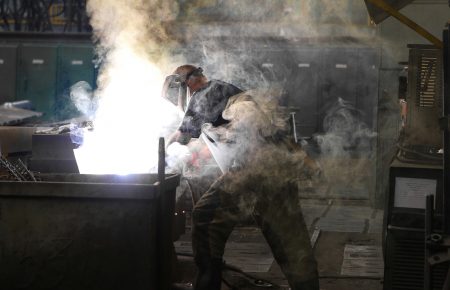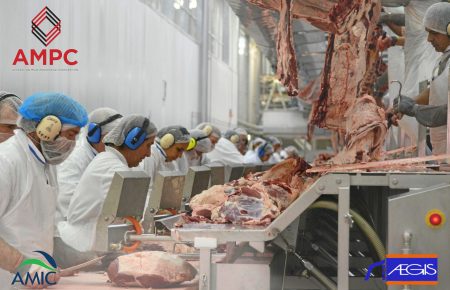By Alex Stratton
On 1 July 2020, WorkSafe Victoria implemented a market freeze, restricting the movement of employers between agents. WorkSafe stated that this was meant to “ensure continuity in the support and care provided to injured workers as they face new challenges to their mental health recovery and uncertainty in their return-to-work outcomes due to the current environment.” (COVID-19).
Since that time, the ‘freeze’ has been extended so many times I have honestly lost count. Firstly, due to the Covid pandemic and then as a response to the withdrawal of CGU from the Victorian market and the cessation of the MAV Self Insurance Scheme by WorkSafe.
And now WorkSafe have confirmed that the market freeze will be extended until, at least, 31 January 2023.
Whilst remaining fundamentally opposed to any market freeze or any other action taken by WorkSafe that impacts on an employer’s ability to ensure that they are obtaining the best possible customer service from an Agent, the two reasons provided above appear, on paper, to have some merit. Though those of us in the industry struggled to understand, how either of these issues should have caused so much disruption to the scheme, that an employer had to tolerate poor service and the associated increase in premiums that this causes.
Now, Australia is opening back up (even WA is now open), and as a nation we are learning to live with Covid. It has also been almost 12 months since CGU exited the scheme. So, we must ask the question:
What can be happening that is so volatile that it warrants a further extension of the ‘freeze’?
What can be happening that justifies trapping employers with Agents with whom they have lost faith?
What can be happening that should placate employers who are paying constantly rising premiums? (Claims costs having reached a staggering $6.8 Billion in 2020/2021.)
What can be happening that leaves employers having to tolerate poor service for a period of two and half years?
Because I know, that for employers these two reasons no longer hold up to scrutiny if they ever did.
WorkSafe’s justification for the extension, still lists the above reasons and now includes a third, “moving another group of injured workers”. If this “group” is the highly speculated movement of 130-week job detached injured workers from the agents to be managed by WorkSafe then I fail to see how this would disrupt the scheme to such an extent that it warrants the extension of the freeze to 31 January 2023.
The frozen market takes away the accountability of agents to provide optimal customer service and this certainly has been felt throughout the scheme.
I speak to numerous employers each day, and at least 90% either say; “we want to test the market” or “we should be allowed to move to get better service”.
As I explain to our clients, you can still move but there are strict exemption criteria that you need to meet if you want to change agents. In fact, there are five:
- Tenders or transfer of relationships already in process prior 1 May 2022 (to include situations where a procurement/tender has already commenced in the expectation of a 30 June 2022 end to the freeze);
- Mergers and acquisitions where employers wish to bring all employees under the same Agent, where the merger had been undertaken prior to the commencement of the new extension.
- Financial hardship including mergers or acquisitions driven by COVID-19;
- An irretrievable breakdown of the relationship between the employer and current Agent; and
- A new exemption criterion for circumstances where there are legislated or regulated requirements for employers to tender their Workers Compensation relationship, which leads to a change of Agent.
Lastly, and it is not listed as an exemption criterion for employers, is that each agent’s General Manager must sign off on the move. What does this mean, well if the General Manager of the losing agent doesn’t sign off on the transfer request, then this will either hold up the process or in fact put a stop to the process all together.
What has the frozen market meant for employers?
- Poor customer service – agents are still trickling back into the office; most are continuing to stick with working from home arrangements in some manner. This has caused a disconnect within agents which is further impacted by the schemes high turnover of case managers which has resulted in the least amount of experience I have seen in my time within this scheme. All agents have vacancies, and the more experienced operators are stretched, in fact an Account Manager with over 20 years in the scheme said “I have never seen the scheme as bad as what it is right now, we are short staffed and constantly dealing with complaints due to inexperienced case managers and lengthy review processes.”
- Delays – As a result of the above employers are dealing with delays for simple requests and the escalation process within an agent is taking far longer compared to pre-pandemic. This has resulted in increasing claims expenses across the scheme, in fact for 20/21 claims expenses increased to $6.8B. The freeze has also resulted in Agents being complacent, why would you worry about servicing a client who can’t leave, this was one of the biggest criticisms of the NSW scheme when they went to one Agent in 2018.
- Lack of accountability – With employers unable to move, the accountability on agents to provide adequate service has been lost. Worksafe will state that an employer can move during the freeze. But they must meet one or more of the 5 exemption criterions and Worksafe certainly do not make it easy for an employer to move. The ownership has been lost within agents and the frozen market has played a big part in this.
With this in mind, are there hidden reasons for the extension of the ‘freeze’. An industry with historically high turnover saw turnover rates exceed 30% following CGU’s exit from the market, with case managers exiting the market and attempts to recruit not always being successful, leaving agents scrambling to fill vacancies and inexperienced staff managing complex claims.
The result, the three points discussed above; poor customer service, delays, and lack of accountability from the agents.
In June 2021 the Labor Government announced a $550 Million injection to prop up the failing the failing scheme which had underwriting losses of across 2019/2020 and 2020/2021 of over $7 Billion dollars. The Labor Government has just announced another $300 Million injection to support the scheme that the Victorian Auditor General has referred to as unsustainable. The injection at its core is to enable WorkSafe to maintain the existing premium rate, which is not at all surprising in an election year, keeping the industry rates low in an attempt to keep employers happy.
From talking to employers, I know that they don’t feel that an Agents high turnover and the mismanagement of the scheme by the regulator, justifies locking them into service with an Agent they believe is failing to service them.
And what happens next year, with the election over, in 2023, could employers be hit with the large increases that were expected this year?
Will we see the rumoured premium increases that have been bantered around for the last two years?
Will the premium capping rate increase from 30% to 40% or even 50%?
If this is the case and employers cop significant increases in premium in 2023, wont they be more likely to seek an alternate agent to manage their claims?
And will Worksafe counteract that extending the market freeze to the end of 2023?
But that is another blog for another day.
The market has been ‘Frozen’ since July 2020, and 31 January 2023, will mark two and a half years since an employer has been able to choose who manages their Victorian Workers Compensation program.
Freezing the market hasn’t improved the performance of the scheme, some would argue it has had an adverse impact on the scheme’s performance.
So, with the scheme spiralling out of control, workers being stranded on compensation and employers paying higher premiums as a result, there are a number of questions that must be asked of WorkSafe:
- Why must employers stay with Agents who are providing them poor customer service?
- Why are employers paying higher premiums (with experience rating) due to poor claims outcomes caused by changes to the scheme
- Why is the freeze really being extended?
- When will WorkSafe stop meddling with the scheme and allow Agents to do their job?
Open up the scheme , allow employers to choose their agent, drive competition and maybe, just maybe, we might see more accountability from agents, improved customer service for employers and better return to work outcomes for injured workers.
























































